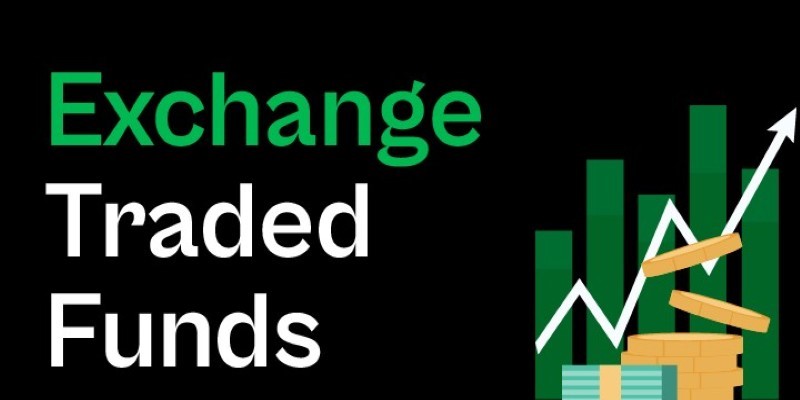Pros And Cons Of Commission-Free Trading Platforms
The rise of commission-free trading platforms has been one of the most significant changes in the investing world over the past decade. These platforms have made trading more accessible to a broader range of people, allowing them to manage investments without the burden of traditional brokerage fees. However, while these platforms offer clear advantages, they also come with their own set of challenges. This article will discuss the pros and cons of commission-free trading platforms, helping you better understand how they work and whether they are the right choice for your trading strategy.
The Rise Of Commission-Free Trading
Before diving into the advantages and disadvantages, it's essential to understand why commission-free trading platforms have become so popular. Historically, brokers charged commissions on each trade, which could add up quickly, especially for active traders. These commissions were a significant source of revenue for traditional brokerage firms. However, the business model has shifted with the advent of low-cost, tech-driven platforms. Many newer platforms, such as Robinhood, Webull, and others, have eliminated these fees to attract a more extensive user base.

While commission-free trading might sound too good to be true, there's more to the story than eliminating fees. These platforms often make money differently, such as through payment for order flow (PFOF), margin lending, and premium services. Let's look closer at the pros and cons of commission-free trading platforms.
Pros Of Commission-Free Trading Platforms
Lower Barrier To Entry For New Investors
One of the most significant benefits of commission-free trading platforms is the reduced financial barrier to entry for new investors. In the past, paying a commission on each trade could discourage individuals from entering the market, significantly if they invested small amounts of money. For example, paying a $5 commission fee on a $100 trade would eat into 5% of the investment.
Commission-free platforms eliminate this problem, allowing individuals to invest in smaller amounts without worrying about fees eroding their returns. This has especially appealed to younger, tech-savvy investors new to the stock market and looking for an easy entry point.
Easier Access To A Wide Range Of Investment Options
Many commission-free platforms offer investment options, including stocks, exchange-traded funds (ETFs), options, and cryptocurrency. This broad selection allows investors to diversify their portfolios with ease. Investors can also take advantage of fractional shares, which means they don't need to buy whole shares of expensive stocks like Amazon or Tesla but can still gain exposure to those companies with smaller amounts of capital.

Moreover, these platforms often have user-friendly mobile apps and websites that make it easier for people to track and manage their investments on the go, making investing more accessible.
Competitive Pressure On Traditional Brokers
As more investors flock to commission-free platforms, traditional brokers have been forced to adjust their fee structures. In response, some established firms have lowered or eliminated their trading commissions. This shift benefits all investors by creating more market competition and driving down costs.

For instance, major players like Charles Schwab and E*TRADE, which once charged commissions for online trades, have offered commission-free trades. This increase in competition has made trading more affordable and accessible for all.
Cons Of Commission-Free Trading Platforms

Potential For Hidden Costs
While commission-free platforms advertise no fees for trades, they often generate revenue through other means, which users might not immediately notice. A common practice is "payment for order flow" (PFOF), where the platform sells the right to execute orders to high-frequency traders or market makers. In some cases, this can result in a worse execution price for the investor, as these market makers may offer slightly less favourable prices to benefit from the transaction.
While PFOF is not inherently bad, it can sometimes lead to inefficiencies, particularly for active traders who execute many transactions. For those who rely on precise execution prices, commission-free platforms might not consistently deliver the best value.
Limited Customer Service And Educational Resources
Commission-free trading platforms, especially newer ones, are often built with a focus on simplicity and cost savings. While this is great for reducing fees, it sometimes comes at the expense of customer service and educational resources. Traditional brokers often provide in-depth market research, analyst reports, and personalized customer support, helping investors make informed decisions. In contrast, commission-free platforms typically offer minimal customer service or support, leaving users to rely on online FAQs and community forums to answer their questions.
This lack of educational tools can be a disadvantage for beginners, as they might not have access to the same resources that traditional brokers offer. Moreover, if an investor runs into problems with the platform, they may find it harder to get prompt assistance compared to using a more established broker with a larger support team.
Lack Of Advanced Tools For Serious Traders
While commission-free platforms are great for beginner and casual investors, they may not offer the advanced features and tools experienced traders need. Professional traders often rely on technical analysis, advanced charting tools, and real-time data feeds to inform their decisions. Many commission-free platforms do not offer these features at no additional cost, which could make them unsuitable for serious traders looking for the tools needed to make complex investment decisions.
Moreover, options traders and day traders, who require real-time data and fast execution, may find that the platform’s offerings fall short compared to those of traditional brokers, which typically offer more sophisticated tools and trading options for active investors.
Limited Research And Analytical Features
Many commission-free trading platforms provide fundamental research and analytical tools. This could be a significant downside for investors who like to conduct thorough research before making investment decisions. While some platforms give access to market data, fundamental analysis, and limited technical indicators, the resources are often essential and insufficient for serious investors who rely on deep research.

Additionally, platforms offering limited research might not provide the educational resources to help users understand the data they see. Investors new to the market might find it challenging to interpret raw market data without proper guidance or educational content.
Conclusion
Commission-free trading platforms have undoubtedly revolutionized how people approach investing, offering a more affordable and accessible option for those looking to enter the market. They have democratized trading, making it easier for new investors to participate without worrying about high fees eating into their returns. For casual investors just starting, commission-free platforms are an excellent choice due to their ease of use, transparency, and cost savings.
Latest Article
-

- How Career Training Transforms Beginners Into Industry Experts
-

- 8 Tips For Maintaining Your Used Car Like New
-

- Understanding Fees And Charges On Trading Platforms
-

- How Online Platforms Revolutionize Career Training For Professionals
-

- What Car Insurance Covers During Natural Disasters
-

- Black Friday Vs Cyber Monday: Which Day Offers Better Deals?















